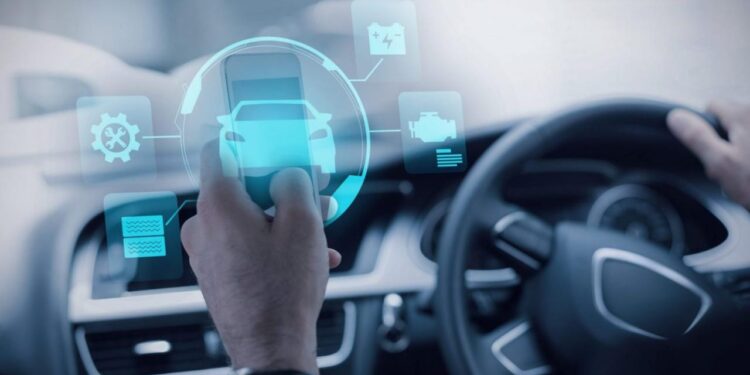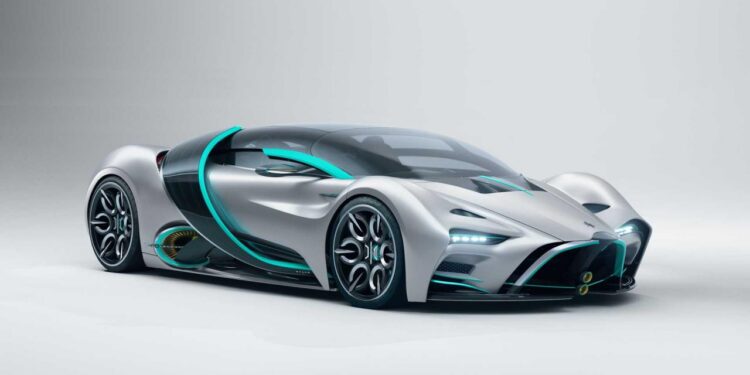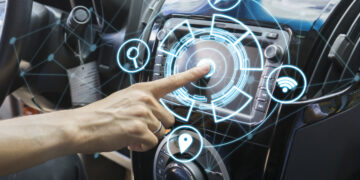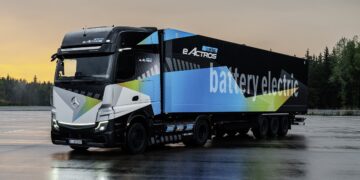In the rapidly evolving automotive landscape of mid-2025, from the bustling highways of Depok, Yogyakarta, Indonesia, to the sprawling urban networks of global megacities, the concept of a mere vehicle has been fundamentally redefined. No longer just a mode of transport, the modern automobile is now a sophisticated, mobile data hub – a connected car. These intelligent machines seamlessly integrate advanced technologies to offer unprecedented levels of safety, efficiency, entertainment, and autonomy, transforming the very essence of driving and travel. This comprehensive article delves into the intricate world of connected vehicles, exploring their core principles, the cutting-edge technologies that fuel their development, their profound impact on industries and daily life, and the complex challenges and ethical considerations they present. We’ll unveil how connected cars are taking over our roads, signifying a monumental shift that promises to redefine urban infrastructure, personal mobility, and the future of transportation.
The Evolution of Connectivity
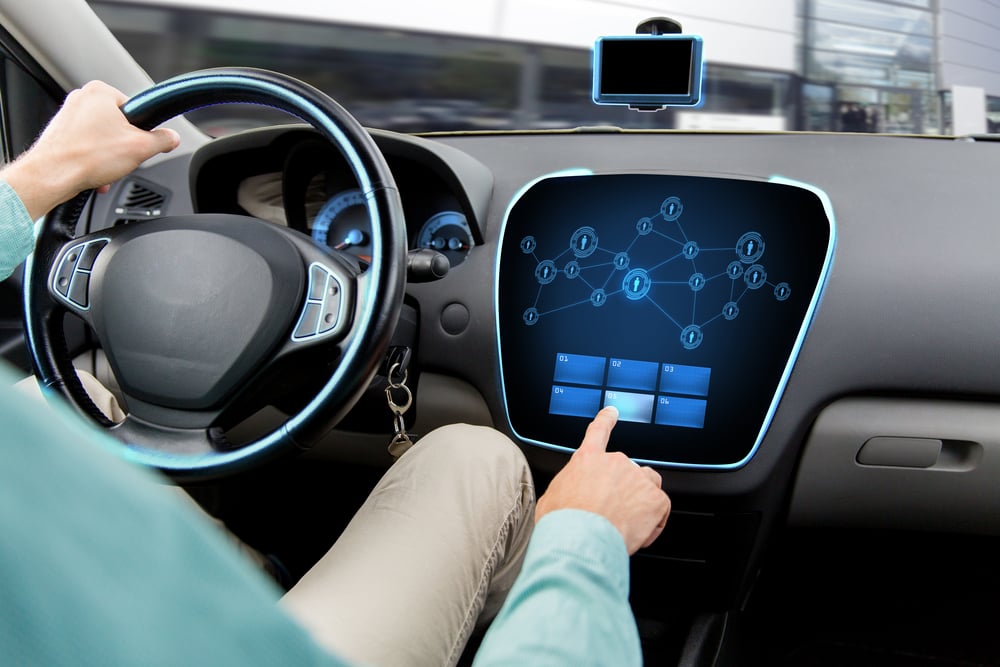
The journey of connected cars began with basic telematics but has rapidly evolved into a complex ecosystem of real-time data exchange, advanced sensing, and artificial intelligence, transforming vehicles into intelligent mobile platforms.
A. Early Telematics: The Dawn of Basic Connectivity:
* Description: The genesis of connected cars dates back to basic telematics systems in the late 20th and early 21st centuries. These early systems primarily focused on emergency services (like GM’s OnStar for automatic crash notification), stolen vehicle recovery, and rudimentary remote diagnostics. Connectivity was often limited to cellular networks, providing essential but non-interactive services.
* Impact: These foundational telematics systems proved the value of remote communication with vehicles, laying the groundwork for more sophisticated connected features. They enhanced safety by providing automatic crash assistance and offered peace of mind through basic security features, setting the initial expectation that vehicles could offer more than just transportation. This era highlighted the potential for data exchange between a vehicle and external systems, opening the door for future innovations.
B. Infotainment Systems and Smartphone Integration:
* Description: As consumer electronics advanced, connected car features expanded significantly into infotainment. Vehicles began integrating GPS navigation, Bluetooth connectivity for hands-free calling and music streaming, and eventually full smartphone mirroring (e.g., Apple CarPlay, Android Auto). This brought familiar digital interfaces and apps directly into the car’s dashboard.
* Impact: This era focused heavily on enhancing the in-car user experience, making journeys more enjoyable, productive, and safer by reducing driver distraction through integrated controls. It made vehicle connectivity a desirable consumer feature, pushing manufacturers to innovate beyond mechanical performance and integrate the digital lifestyle directly into the driving experience, solidifying the car as an extension of one’s personal tech ecosystem.
C. Vehicle-to-Everything (V2X) Communication: The Networked Road:
* Description: V2X communication is a groundbreaking technology that allows vehicles to communicate directly with other vehicles (V2V), infrastructure (V2I like traffic lights or road signs), pedestrians (V2P via smartphone apps), and the network (V2N for cloud services). This creates a dynamic, real-time network of moving entities and static infrastructure. Technologies involved include Dedicated Short-Range Communications (DSRC) and Cellular V2X (C-V2X) using 5G networks.
* Impact: V2X promises to revolutionize road safety by enabling collision avoidance warnings, traffic congestion mitigation, and optimized route planning based on real-time road conditions. It is a critical enabler for truly autonomous driving, as it allows vehicles to “see” beyond their line of sight and anticipate hazards that on-board sensors might miss, creating a far more intelligent and responsive transportation system.
D. Advanced Driver-Assistance Systems (ADAS) and Sensor Fusion:
* Description: ADAS refers to systems that assist the driver in driving and parking functions, enhancing safety and reducing stress. This includes adaptive cruise control, lane-keeping assist, automatic emergency braking, blind-spot monitoring, and parking assist. These systems rely on sensor fusion, combining data from various sensors like radar, lidar, cameras (visible light, infrared), and ultrasonics to create a comprehensive understanding of the vehicle’s surroundings.
* Impact: ADAS significantly improves road safety by preventing accidents and mitigating their severity. It also reduces driver fatigue and stress, making long journeys more comfortable. Sensor fusion provides a robust, redundant perception system that is crucial for the development of higher levels of autonomous driving, as it ensures accuracy and reliability even in challenging environmental conditions, laying the foundation for self-driving capabilities.
E. Over-the-Air (OTA) Updates and Software-Defined Vehicles (SDVs):
* Description: Modern connected cars are increasingly designed as Software-Defined Vehicles (SDVs), meaning a significant portion of their functionality (from engine performance to infotainment and ADAS features) is controlled by software. This software can be updated wirelessly Over-the-Air (OTA), similar to smartphone updates.
* Impact: OTA updates allow manufacturers to continuously improve vehicle performance, add new features, fix bugs, and enhance security throughout the car’s lifespan without requiring a dealership visit. This extends the car’s relevance, improves customer satisfaction, and enables manufacturers to rapidly deploy new functionalities, transforming the car into an evolving digital platform rather than a static piece of hardware.
The evolution of connected car technologies highlights a trajectory towards increasingly intelligent, autonomous, and integrated vehicles that will fundamentally redefine our relationship with transportation.
Core Components and Functionalities of Connected Cars
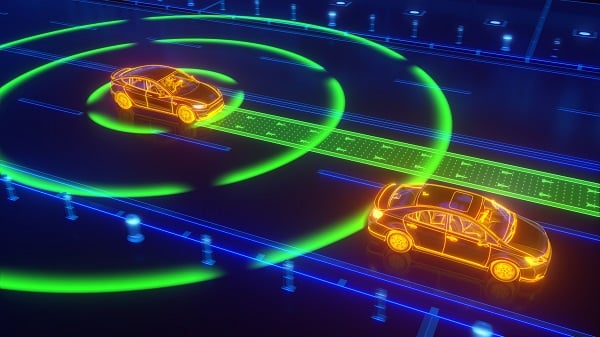
The capabilities of a connected car stem from a sophisticated interplay of hardware, software, and communication technologies, each contributing to a seamless and intelligent driving experience.
A. Telematics Control Unit (TCU): The Connectivity Hub:
* Description: The TCU is a dedicated embedded system within the vehicle that provides wireless communication capabilities. It contains a cellular modem (e.g., 4G/5G), GPS module, and sometimes Wi-Fi or Bluetooth radios. It acts as the primary gateway for data exchange between the car and external networks (cloud, other vehicles).
* Impact: Enables all major connected services, from emergency calls (eCall) and remote diagnostics to infotainment streaming and OTA updates. It’s the essential hardware that links the vehicle to the broader digital world, providing the foundational communication for all smart car features.
B. In-Vehicle Infotainment (IVI) Systems:
* Description: The car’s central display and control system for entertainment, navigation, communication, and vehicle settings. Modern IVI systems are often large touchscreen displays, featuring intuitive user interfaces, voice control, app integration (CarPlay, Android Auto), and internet connectivity.
* Impact: Enhances the driving and passenger experience by providing access to rich media, real-time navigation updates, personalized settings, and seamless smartphone integration. It transforms the car’s cabin into a customizable digital environment, improving convenience, entertainment, and information access during journeys.
C. Advanced Sensor Arrays (Radar, Lidar, Cameras, Ultrasonic):
* Description: Connected cars are equipped with a suite of sophisticated sensors that constantly gather data about the vehicle’s surroundings.
* Radar: Measures distance, speed, and angle of objects, effective in adverse weather.
* Lidar: Uses lasers to create precise 3D maps of the environment, crucial for highly accurate obstacle detection.
* Cameras: Capture visual information, used for lane keeping, traffic sign recognition, object detection, and driver monitoring.
* Ultrasonic Sensors: Used for short-range detection, primarily in parking assist systems.
* Impact: These sensors provide the vehicle’s “eyes and ears,” creating a comprehensive, real-time environmental awareness crucial for ADAS and autonomous driving. Their data feeds into the vehicle’s onboard computers for immediate processing, enabling crucial safety features and navigation.
D. On-Board Processors and Artificial Intelligence (AI):
* Description: Powerful, specialized computers and AI chips (e.g., NVIDIA Drive, Qualcomm Snapdragon Ride) are embedded within connected cars. These processors execute complex algorithms for sensor fusion, real-time decision-making for ADAS and autonomous driving, voice recognition, and predictive maintenance.
* Impact: AI is the “brain” that processes the vast amounts of sensor data, interprets driving conditions, and makes critical decisions in milliseconds. It enables the vehicle to understand its environment, anticipate hazards, and react autonomously, moving beyond basic automation to true intelligent driving capabilities and personalized user experiences.
E. Cloud Connectivity and Backend Services:
* Description: Connected cars constantly send and receive data from cloud-based backend services. This includes real-time traffic updates, remote software updates, vehicle health monitoring, crash data reporting, and personalized infotainment content delivery.
* Impact: Provides the centralized intelligence and data storage necessary for many connected car features. Cloud connectivity enables continuous vehicle improvement, supports predictive maintenance by analyzing fleet-wide data, and facilitates the delivery of always-up-to-date services and content, enhancing safety and convenience for drivers.
These core components collectively create the intelligent, responsive, and highly integrated connected car, fundamentally transforming the driving experience.
The Transformative Impact of Connected Cars
The widespread adoption of connected cars is a catalyst for profound transformation across numerous industries, urban environments, and individual lifestyles.
A. Revolutionizing Road Safety and Accident Prevention:
* Description: V2X communication, advanced ADAS (like automatic emergency braking, lane-keeping assist, blind-spot detection), and predictive analytics powered by real-time data from other connected vehicles are drastically reducing the incidence and severity of road accidents.
* Impact: Connected cars are making roads significantly safer by reducing human error, which is the cause of the vast majority of accidents. This leads to fewer injuries and fatalities, lower insurance premiums, and reduced strain on emergency services, fundamentally altering the safety profile of our transportation systems.
B. Optimizing Traffic Flow and Reducing Congestion:
* Description: Real-time data sharing between connected vehicles and smart city infrastructure (V2I) allows for dynamic traffic light optimization, intelligent routing suggestions (avoiding congested areas), and adaptive speed limits.
* Impact: Reduces traffic congestion, shortens commute times, and lowers fuel consumption and emissions. This creates more efficient urban transportation networks, improves air quality, and enhances overall urban liveability, transforming the daily experience of commuting for millions.
C. Enhancing Personal Mobility and Convenience:
* Description: Connected cars offer seamless navigation, remote vehicle control (e.g., pre-heating cabin, locking/unlocking doors), personalized infotainment, and integrated payment systems (e.g., for parking, toll roads). Autonomous features further enhance convenience by handling driving tasks.
* Impact: Makes travel more convenient, comfortable, and enjoyable. It frees up driver time for other activities (especially with increasing autonomy), simplifies tasks like parking, and provides access to personalized services on the go, making the car an increasingly integrated and flexible part of our daily lives.
D. Transforming the Automotive Industry and Business Models:
* Description: Connected cars are shifting the automotive industry from a focus on hardware sales to a blend of hardware and recurring software/service revenue. New business models include subscriptions for features, data monetization, and mobility-as-a-service offerings (e.g., autonomous ride-sharing fleets).
* Impact: Drives a fundamental restructuring of the automotive industry, compelling manufacturers to become technology and service providers. It creates new revenue streams, fosters continuous innovation throughout the vehicle’s lifespan, and attracts new players (e.g., tech companies) into the mobility sector, intensifying competition and innovation.
E. Enabling Smart City Development and Urban Planning:
* Description: Data from connected cars provides valuable insights for urban planners to optimize infrastructure, design more efficient public transportation systems, and plan for future urban development (e.g., charging infrastructure for EVs, dedicated autonomous vehicle lanes).
* Impact: Accelerates the development of truly smart cities by providing a rich stream of real-time urban data. It enables data-driven urban planning that can create more sustainable, efficient, and livable cities, addressing challenges like pollution, traffic, and resource management with unprecedented precision.
The widespread adoption of connected cars is a powerful catalyst, creating ripple effects that extend far beyond the automotive sector, redefining mobility, urban living, and economic activity.
Challenges and Ethical Considerations in the Connected Car Era
Despite their immense potential, the rise of connected cars presents a complex array of challenges and ethical dilemmas that require careful consideration and robust solutions.
A. Data Privacy and Security:
* Description: Connected cars collect vast amounts of sensitive data: location, driving habits, biometric data (from in-cabin cameras), infotainment usage, and potentially personal conversations. This raises significant concerns about who owns this data, how it’s used, and its vulnerability to cyberattacks.
* Impact: Requires robust encryption, stringent data governance policies, clear user consent mechanisms, and strong cybersecurity measures to protect sensitive personal information from breaches, misuse, or unauthorized surveillance. Ensuring trust in data handling is paramount for widespread adoption and consumer acceptance.
B. Cybersecurity Vulnerabilities and Hacking Risks:
* Description: As vehicles become more connected and software-dependent, they become potential targets for cyberattacks. A successful hack could compromise safety systems (e.g., braking, steering), steal personal data, or even take control of the vehicle remotely.
* Impact: Poses critical safety risks and national security concerns. Requires continuous, proactive cybersecurity development, secure software updates (OTA), robust authentication protocols, and industry-wide collaboration to safeguard vehicles from malicious actors and ensure the integrity of the transportation system.
C. Ethical Dilemmas in Autonomous Driving:
* Description: Fully autonomous vehicles face complex ethical dilemmas in unavoidable accident scenarios (e.g., forced to choose between hitting pedestrians or swerving to risk occupants). Programming these moral decisions is a profound philosophical and technical challenge.
* Impact: Demands clear ethical guidelines, transparent algorithms, and public discourse on how autonomous systems should prioritize different values in critical situations. These decisions will shape public trust, legal frameworks, and the societal acceptance of self-driving technology, with profound implications for liability and human agency.
D. Regulatory and Legal Frameworks:
* Description: Existing traffic laws, liability frameworks, and insurance regulations were not designed for highly connected or autonomous vehicles. Developing new, harmonized regulations for testing, deployment, and operation across different jurisdictions is a significant challenge.
* Impact: Lack of clear regulations can stifle innovation, create legal uncertainty, or lead to inconsistent adoption. Governments must collaborate internationally to develop adaptive, comprehensive legal frameworks that address liability, data ownership, cybersecurity, and operational standards for connected and autonomous vehicles.
E. Infrastructure Readiness (5G, Charging):
* Description: Many advanced connected car features (e.g., V2X, real-time cloud processing) rely on robust, low-latency 5G cellular networks and extensive charging infrastructure for electric vehicles. The deployment of this infrastructure is still ongoing in many regions.
* Impact: Inadequate infrastructure can limit the full potential and widespread adoption of connected and electric vehicles, creating regional disparities in service availability and performance. Significant investment and coordinated efforts are required to build the necessary digital and energy backbone to support this transformation.
Navigating these challenges requires a concerted effort from manufacturers, policymakers, technologists, and the public to ensure that the benefits of connected cars are realized responsibly and equitably.
Conclusion
In mid-2025, the proliferation of connected cars marks a definitive turning point in the history of transportation. These are not merely vehicles; they are sophisticated, intelligent platforms that seamlessly integrate advanced sensing, real-time data exchange, and artificial intelligence to redefine our relationship with mobility. From the enhanced safety promised by V2X communication and advanced driver-assistance systems to the optimized traffic flow of smart cities and the personalized convenience of in-vehicle infotainment, the impact of these vehicles is profound and far-reaching, transforming everything from daily commutes to global logistics.
The ingenuity behind this transformation lies in the continuous evolution of core components—powerful TCUs, intricate sensor arrays, robust onboard AI, and seamless cloud connectivity—all working in harmony to create an ever-smarter driving experience. This shift is not just about technology; it’s about fundamentally reshaping the automotive industry’s business models, enabling new services, and creating a more efficient and sustainable urban future.
However, the journey ahead is also fraught with complex challenges: safeguarding data privacy and cybersecurity, resolving profound ethical dilemmas in autonomous decision-making, adapting regulatory frameworks, and building out the necessary infrastructure. Navigating these complexities requires a collaborative effort from manufacturers, governments, and society. Ultimately, the relentless march of connected cars taking over our roads signifies a future of intelligent mobility – a future where vehicles are not just machines, but indispensable, evolving partners in our daily lives, promising greater safety, efficiency, and unprecedented convenience for everyone.

